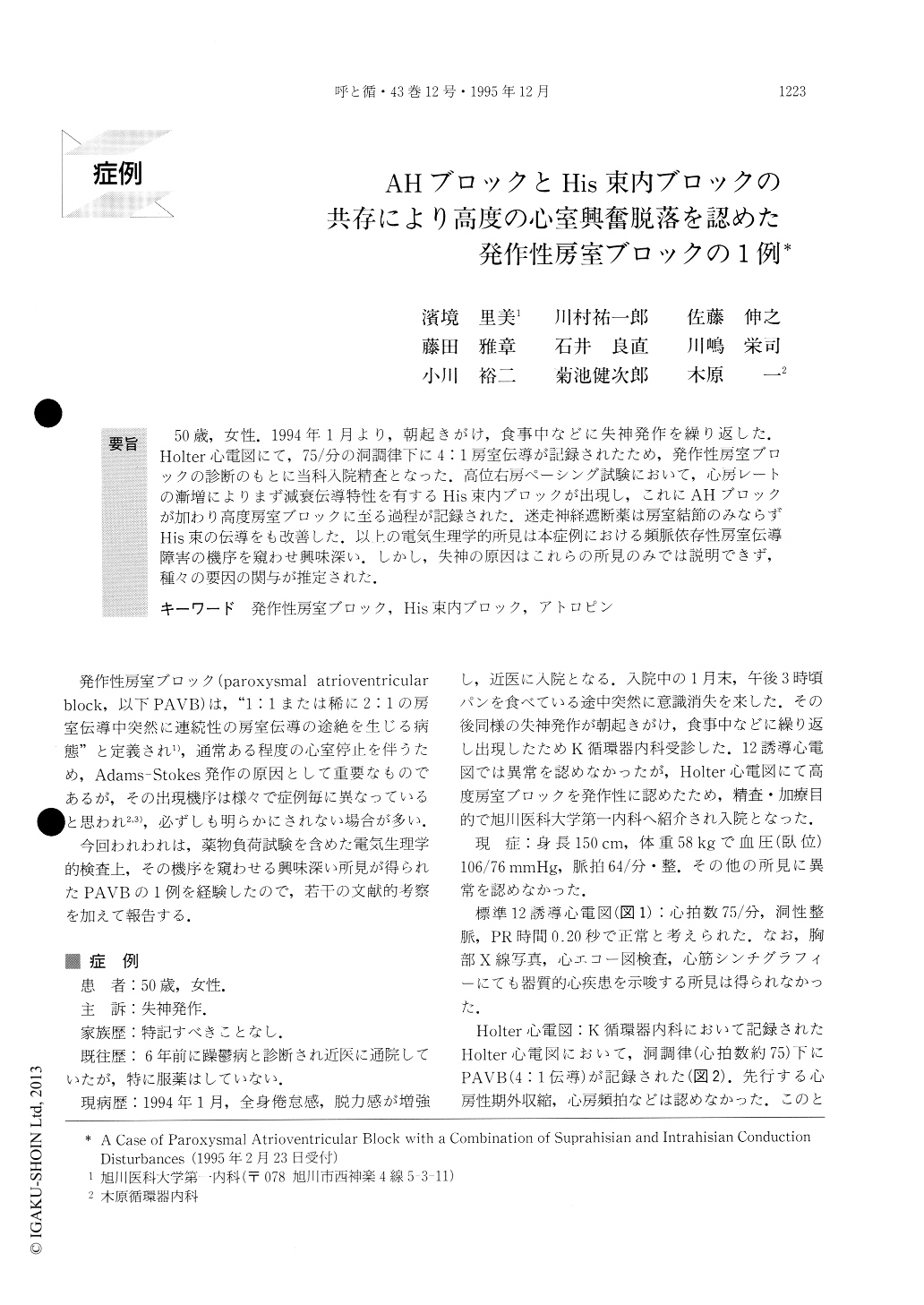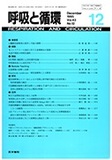Japanese
English
- 有料閲覧
- Abstract 文献概要
- 1ページ目 Look Inside
50歳,女性.1994年1月より,朝起きがけ,食事中などに失神発作を繰り返した.Holter心電図にて,75/分の洞調律下に4:1房室伝導が記録されたため,発作性房室ブロックの診断のもとに当科入院精査となった.高位右房ペーシング試験において,心房レートの漸増によりまず減衰伝導特性を有するHis束内ブロックが出現し,これにAHブロックが加わり高度房室ブロックに至る過程が記録された.迷走神経遮断薬は房室結節のみならずHis束の伝導をも改善した.以上の電気生理学的所見は本症例における頻脈依存性房室伝導障害の機序を窺わせ興味深い.しかし,失神の原因はこれらの所見のみでは説明できず,種々の要因の関与が推定された.
A 50-year-old woman was hospitalized with a repeti-tive syncopal attack and sudden 4 to 1 atrioventricular conduction observed on a Holter record. No identifiable structural heart disease was proved by chest X-ray and echocardiography. Pacing trials from the high right atrium were performed with the recording of His bundle electrogram. An intrahisian block with decremental property was induced by relatively low pacing rates (90 bpm and 110 bpm) in which no atriohisian block was yielded. A second-degree intrahisian block combined with a second-degree atriohisian block was developed by a high rate (250 bpm) pacing, resulting in the succes-sive defect of ventricular depolarizations. Atropine improved not only the atriohisian conduction but also the intrahisian conduction. These results suggest that the His bundle of this patient was structurally damaged and that the cholinomimetic action modulated the His bundle refractoriness. However, the damaged atrioventricular conduction cannot completely account for the syncope because the observed duration of the ventricular asystole was too short. Some additional factors might be involved in this symptom.

Copyright © 1995, Igaku-Shoin Ltd. All rights reserved.


